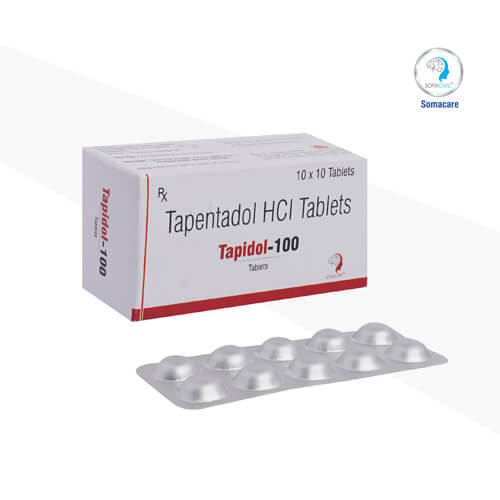
Tapentadol 200mg
Tapentadol pills are a type of medication that is commonly prescribed for the management of moderate to severe pain.

Take this medicine only as directed by your doctor. Do not take more of it, do not take it more often, and do not take it for a longer time than your doctor ordered.
Tapentadol is an opioid pain medication. Tapentadol is used to treat moderate to severe pain. Nucynta ER is not for use on an as-needed basis for pain. Do not use tapentadol if you have used a MAO inhibitor in the past 14 days. A dangerous drug interaction could occur. MAO inhibitors include isocarboxazid, linezolid, methylene blue injection, phenelzine, rasagiline, selegiline, or tranylcypromine.
Ref document number: Country of ref document: EP. A hydrochloric tapentadol injection and a preparation method thereof. The invention also relates to a process for the preparation of a small volume injection of tapentadol hydrochloride. Second, the background technology. The approved specifications were 50 mg, 75 mg, and mg, respectively, and the FDA was on August 25, Tetamistat hydrochloride sustained-release tablets were approved for the relief of moderate to severe acute pain, and the approved specifications were 50 mg, mg, mg, mg, and mg, respectively.
How Tapentadol works Tapentadol decreases the perception of pain by blocking the transmission of pain signals to the brain. Duovolt Ipca Laboratories Ltd. Tapcynta Macleods Pharmaceuticals Pvt Ltd. Tapentrol Torrent Pharmaceuticals Ltd. Expert advice for Tapentadol Tapentadol is a strong painkiller which is used in the treatment of moderate to severe pain when other treatments do not treat your pain well enough or you cannot tolerate them. Take exactly as prescribed by your doctor. Use caution while driving or doing anything that requires concentration as Tapentadol can cause dizziness and sleepiness. Frequently asked questions for Tapentadol Tapentadol Q.
Patentee after: Curegen Jiangsu Pharmaceuticals Inc. Patentee after: Wu Renrong. Patentee before: Wu Renrong. The invention provides a new tapentadol hydrochloride injection, particularly a small-capacity injection and a preparation method thereof. The injection is composed of tapentadol hydrochloride or tapentadol alkali with active ingredients, and medicinal carriers.
Tapentadol is FDA approved for the treatment of moderate to severe acute pain. Due to the dual mechanism of action as an opioid agonist and norepinephrine reuptake inhibitor, there is potential for off label use in chronic pain. Tapentadol is a new molecular entity that is structurally similar to tramadol. Tapentadol is a centrally-acting analgesic with a dual mode of action as an agonist at the mu-opioid receptor nucynta 50mg er as a norepinephrine reuptake inhibitor. These two actions are synergistic in pain relief.

Nucynta tapentadol immediate release oral tablets is an opioid analgesic pain reliever indicated for the relief of moderate to severe acute pain in patients 18 years of age or older. Nucynta may be dosed at 50 mg, 75 mg, or mg every 4 to 6 hours depending upon pain intensity. Nucynta may interact with cold or allergy medicines, sedatives, narcotic pain medicines, sleeping pills, muscle relaxers, and medicines for seizures, depression or anxiety. Tell your doctor all medications and supplements you use. Tell your doctor if you are pregnant or plan to become pregnant during treatment with Nucynta. It is unknown if Nucynta is harmful to a fetus.
Tapentadol HCI is an opioid narcotic analgesic, which also inhibits norepinephrine reuptake. In addition, similar to tricyclic antidepressants, tapentadol blocks the neuronal reuptake of norepinephrine, which, in turn, increases synaptic concentrations of this neurotransmitter. Tapentadol is available in mg, mg, and mg immediate-release tablets and is indicated for moderate-to-severe acute pain. Most side effects from narcotic analgesics are thought to be due to their binding to and activation of opioid receptors in the brain, spinal cord, and gastrointestinal tract. The development of a drug with less affinity for opioid receptors than classic narcotics, yet possessing an additional mechanism of action, was undertaken to create a compound with at least equivalent analgesic efficacy to narcotics but with better tolerability.
Time-course of patient's self-recorded graphic extension pain scores according to tapentadol administration. Thus, pain management in CP represents a major challenge for the attending physicians.
In, Janssen Pharmaceutical released a chemical entity known as tramadol Ultram. In, Janssen released a similar entity, tapentadol Nucynta, as a Schedule II analgesic that was the first new opioid entity with controlled substance status approved by the U.
Tapentadol SR is a centrally acting opioid analgesic that binds to the mu-opioid receptor. In addition it inhibits noradrenaline reuptake.
Tydol mg tablet is a pain relief medication prescribed for moderate to severe pain. It contains tapentadol as its key ingredient. It belongs to the opiate narcotic analgesics family of medicine. Tapentadol is an opioid and is also known tapentadol hydrochloride 100 mg a narcotic. The mode of action of Tydol mg tablets is by altering the pain reaction of the brain and the nervous system by blocking the transmission of pain impulses to the brain. Side effects of Tydol mg tablets include nausea, vomiting, dizziness, constipation and sleepiness.

Tapentadol is approximately two to three tapentadol hydrochloride 100 mg more potent than tramadol and two to three times less potent than morphine. The toxicity profiles of tramadol and tapentadol are similar; however tapentadol is likely to result in less exposure to serotoninergic adverse effects nausea, vomiting, hypoglycaemia but cause more opioid adverse effects constipation, respiratory depression, abuse than tramadol. The safety of tapentadol in real-world conditions remains poorly documented, particularly in at-risk patient subgroups and also in the ability to assess the risk associated with its residual serotonergic activity serotonin syndrome, seizures. Because of an earlier market introduction, more real-world safety data are available for tramadol, including data from at-risk patient subgroups. The level of evidence on the efficacy of both tramadol and tapentadol for the treatment of chronic pain is globally low. In conclusion, tapentadol is not a first-line opioid but represents an additional analgesic in the therapeutic choices, which some patients may benefit from after careful examination of their clinical situation, co-morbidities and co-medications.